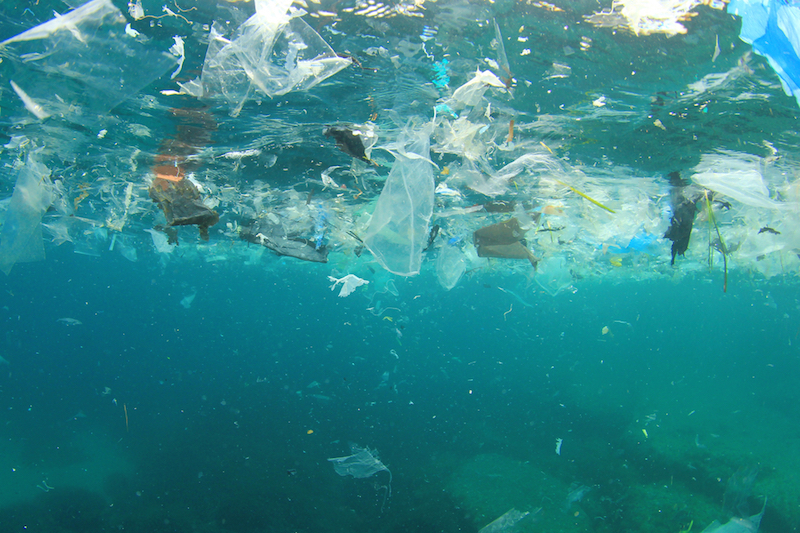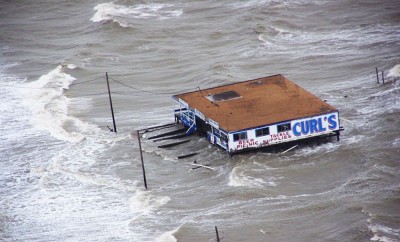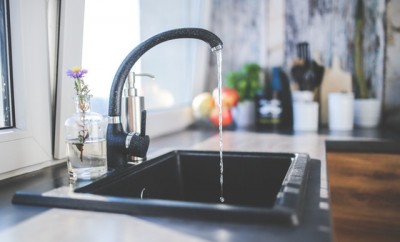Environment
How to go plastic free

Image: Rich Carey/Shutterstock
Every day, all of us touch, buy, and toss away plastic. Everyday items like toothbrushes, phone cases, food containers, and coffee to-go cups are made of plastic, and will most likely end up in a landfill. In a 2013 study, the Environmental Protection Agency estimated that Americans recycled or composted about 34% of the 234 million tons of trash created that year. A lot of that waste was plastic, but how is plastic waste inherently worse than glass or paper?
Plastic in Landfills and Oceans
Some plastics can take several hundred years to fully decompose, while others never decompose. They simply break down into smaller pieces of plastic while maintaining their molecular shape and characteristics. Every piece of plastic ever created still exists today. Regardless of its decomposition rate, millions of tons of plastic are ending up in our landfills and oceans. Not only does marine life often mistake plastic for a food source and get caught in the netting, but plastic also leeches harmful chemicals into the ocean as it break down in the salty environment. We then risk consuming these toxins when we eat wild caught fish.
Learning the dirty truths about the havoc that plastic wreaks in our world can be overwhelming. How can you possibly give up something that has permeated every aspect of life? It’s important to try. Plastic, unlike glass and paper, can only be down-cycled, which means it cannot be recycled infinitely. One day, your plastic water bottle will end up in a landfill or the ocean, even if you recycle it.
Without delving too far into the dangers posed by our reliance on plastic, however, it’s good to realize that you do not have to be a slave to the petroleum industry, the manufacturers of plastic. It may seem impossible, but it is possible to move toward a plastic free lifestyle.
The Grocery Store
When making a major lifestyle change, it is always good to start with the easiest switches. Choosing to buy grocery store products packaged in glass or metal, both of which can be recycled indefinitely, can cut down on landfill waste.
Single use plastic bags have become the bane of most environmentalists’ existence. Over 60 cities and counties in California have already banned or greatly taxed single-use plastic bags. But American’s aren’t just using these flimsy bags at checkout, they’re also using them in the produce section. Both of these problems can be easily remedied by purchasing large reusable totes and small reusable produce bags. Etsy and Amazon sell both in a multitude of colors, fabrics, and styles. Going plastic free in the check out lane can greatly reduce the amount of oil you indirectly use and the number of plastic bags ending up in the ocean.
In the Bathroom
The first thing most of us do each morning is brush our teeth with a plastic toothbrush. Companies like Brush With Bamboo make 100% plant-based toothbrushes, which are also compostable.
Just like toothbrushes, typical toothpaste comes packaged in plastic and can sometimes even contain plastic. Eck! Does your toothpaste have “glitter” or tiny little blue micro beads? Chances are, those are plastic. And you’re ingesting them—twice a day. Plenty of natural toothpaste companies exist, and popular brands like Tom’s of Maine can now be found in large chain supermarkets. Each tube of Tom’s of Maine toothpaste can be terracycled.
If you’re looking to go totally plastic free, consider making your own toothpaste. There are dozens of recipes for DIY toothpaste online, including ones using a combination of coconut oil, baking soda, and peppermint oil.
In the same vein of keeping your mouth care routine plastic free, many Whole Foods Markets sell plastic free floss called Gentle Floss by Eco Dent. Refillable glass vials of floss are also available online.
Some health food stores makes a plastic free bathroom even more possible by selling lotion, shea butter, shampoo, and conditioner in bulk. In order to buy these things without creating waste, customers bring their own containers, fill them up and have them weighed at the checkout counter. If yours doesn’t, consider asking the manager to implement such a program.
Another great and easy way to save money and go plastic-free is to use package-free bar soap, available at many natural foods stores nationwide.
In the Kitchen and at Restaurants
Single-use plastic cutlery, cups, straws, and Styrofoam plates are one of the biggest culprits of plastic waste. Avoiding these can be as easy as refusing a straw when you go out for drinks, or as intensive as carrying around your own reusable utensils and containers.
If you often bring food from home, consider investing in a stainless steel plate, spork, and a to-go tin. You can even use these to take extra food home when you ask for a “doggie bag.”
America’s dependency on coffee has also proven to be a huge contributor to plastic infused landfills. Few of us have enough time to sit down and have an almond latte at a nice local coffee shop, so we settle by throwing $5 at the drive-thru and rush to our next meeting. Grabbing a to-go coffee can be detrimental to both our wallets and our environment. An easy fix is to purchase a reusable glass or metal coffee tumbler and have your counterperson fill it for you.
No matter what you chose to do in your fight to go plastic free, always remember that every little act counts. Every straw you refuse and every bottle you reuse saves plastic from ending up sitting on our beautiful planet forever.





0 comments